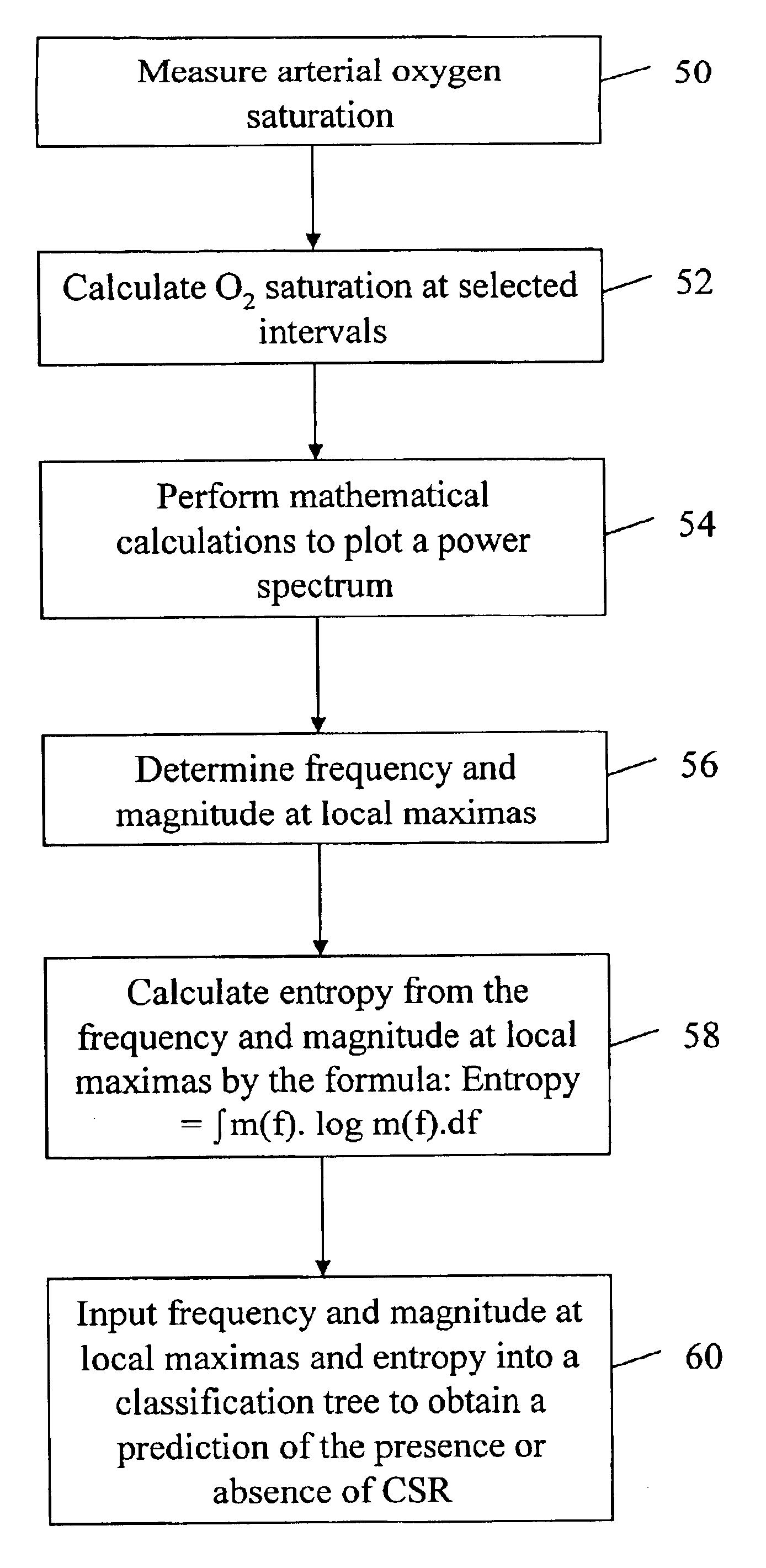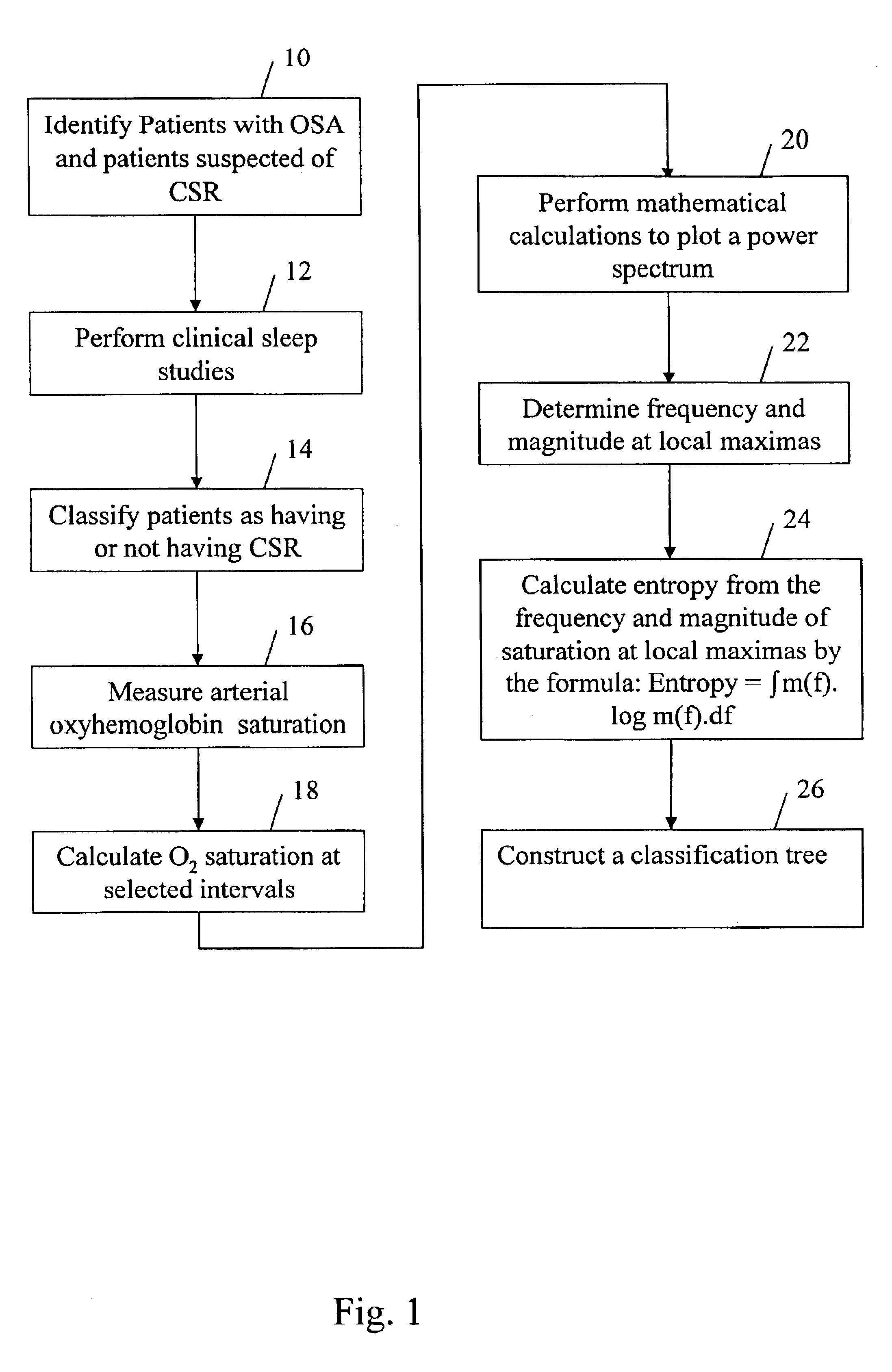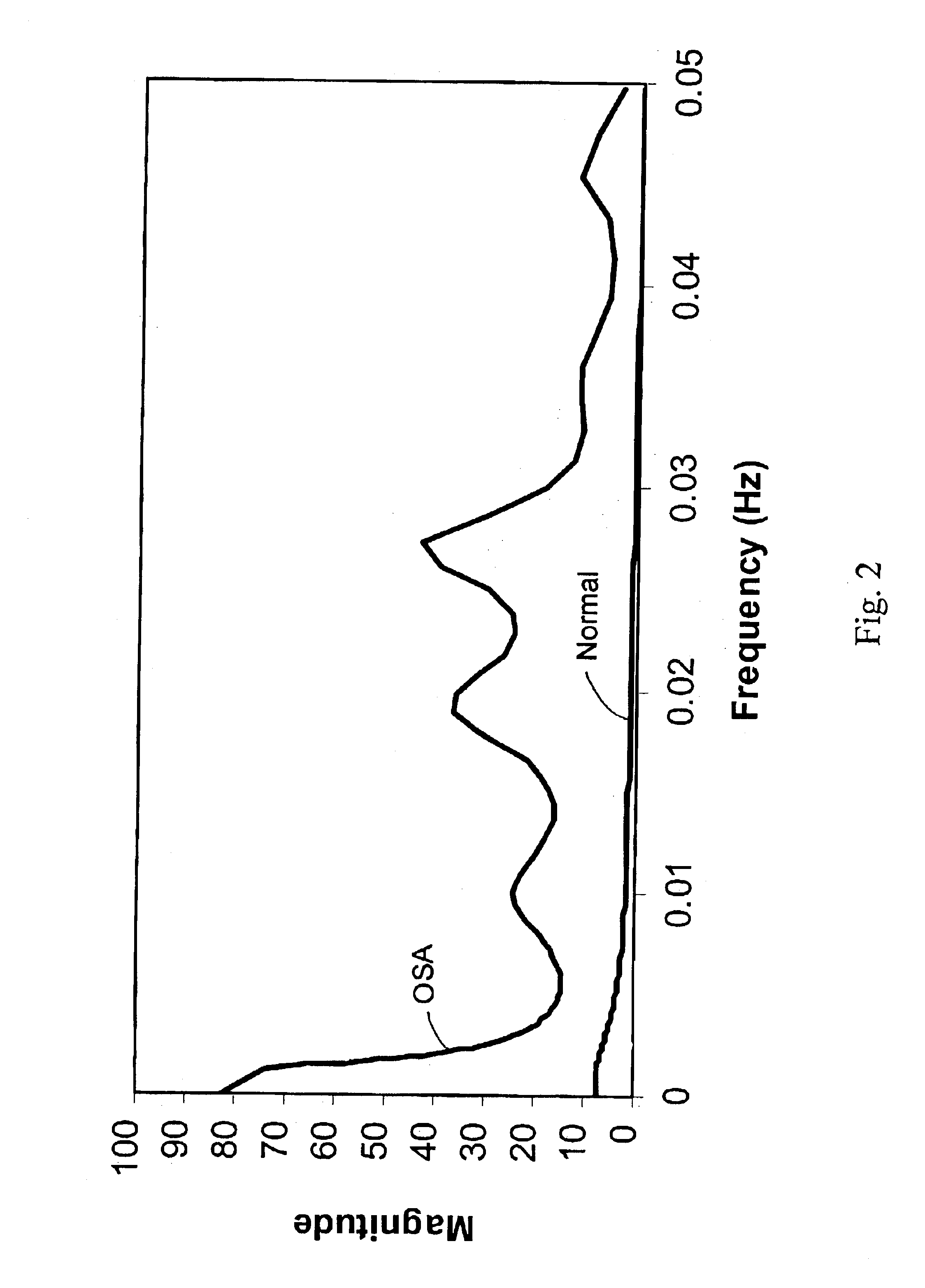Method for detecting Cheyne-Stokes respiration in patients with congestive heart failure
a technology of congestive heart failure and respiration, which is applied in the field of sleep disordered breathing, can solve the problems of increased arousal, poor sleep quality, and oxygen desaturation
- Summary
- Abstract
- Description
- Claims
- Application Information
AI Technical Summary
Problems solved by technology
Method used
Image
Examples
example 1
For developing a classification tree, patients suspected of obstructive sleep apnea were identified (Step 10). An analysis of sleep studies (Step 12) was performed in 248 patients at the Sleep Laboratory at the Veterans Affairs (VA) Medical Center in Buffalo, N.Y. (n=45) and at the National Sleep Technologies Laboratory in Syracuse, N.Y. Patients with left ventricular failure had been studied in the sleep laboratory in Buffalo as part on another study on sleep disordered breathing in patients with left venticular failure. All patients in Syracuse sleep laboratory were suspected of obstructive sleep apnea syndrome.
All the sleep studies were performed between February 1998 and June of 1999. Continuous electroencephalogram, electrooculogram, electrocardiogram, and submental electromyogram were recorded on a 16-channel polygraph using standard techniques, and digitized on a computerized system. The sleep data collection system was Aquetron 1000P at the Buffalo VA and Healthdyne in Syrac...
example 2
This embodiment describes the development of trained neural networks to classify patients as having CSR, OSA or normal breathing. Artificial neural networks (ANN) are computation systems that mimic analytic approach of biologic systems by using a large numbers of interconnected artificial neurons (Cross et al., 1995, Lancet, 346, 1075-1079). Just as humans apply knowledge gained from past experience to new problems or situations, a neural network takes previously solved examples to build a system of “neurons” that makes new decisions, classifications, and forecasts. Neural networks look for patterns in training sets of data, learn these patterns, and develop the ability to correctly classify new patterns or to make forecasts and predictions. An artificial neural network for predicting respiratory disturbances is described in U.S. Pat. No. 6,083,173, incorporated herein by reference.
The construction of the neural network is illustrated in FIG. 7. The method begins by performing overn...
example 3
This embodiment describes the use of the trained neural network for diagnosis of patients as having CSR, OSA or no sleep breathing disorder. The steps of this method are shown in FIG. 9. To use the trained neural network, overnight oximetry readings are performed on patients suspected of having a respiratory condition (step 200). Any artifacts arc searched and eliminated. It is preferable to verify that there is sufficient duration of record without artifact for analysis. The number of desaturation events / hour to 2, 3% and 4% below baseline values are calculated. Then the cumulative time as percent of recording time that oxygen saturation is below selected values (such as 90, 88, 86, 84, 82 and 80%) is calculated. Frequency analysis is performed by maximum entropy method. The highest (M1) and second highest (M2) peaks of power are identified and the magnitudes and frequency at which they occur are determined (Step 202). The delta index is calculated as described in Example 2 (Step 2...
PUM
 Login to View More
Login to View More Abstract
Description
Claims
Application Information
 Login to View More
Login to View More - R&D
- Intellectual Property
- Life Sciences
- Materials
- Tech Scout
- Unparalleled Data Quality
- Higher Quality Content
- 60% Fewer Hallucinations
Browse by: Latest US Patents, China's latest patents, Technical Efficacy Thesaurus, Application Domain, Technology Topic, Popular Technical Reports.
© 2025 PatSnap. All rights reserved.Legal|Privacy policy|Modern Slavery Act Transparency Statement|Sitemap|About US| Contact US: help@patsnap.com



